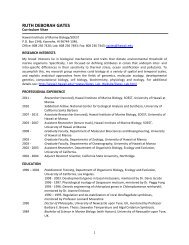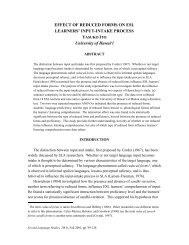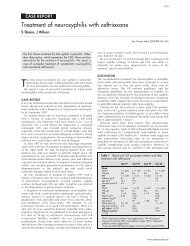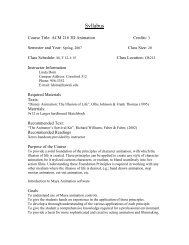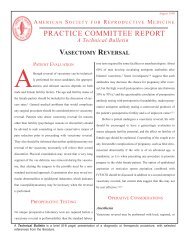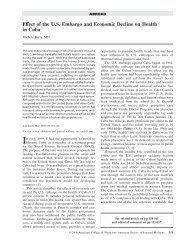Tying and Untying the Trouser-Cord - University of Hawaii
Tying and Untying the Trouser-Cord - University of Hawaii
Tying and Untying the Trouser-Cord - University of Hawaii
Create successful ePaper yourself
Turn your PDF publications into a flip-book with our unique Google optimized e-Paper software.
58 J. W. Frembgen<br />
instance, a married couple forms an independent household (Eglar 1960, p. 87). The<br />
years <strong>of</strong> ‘untying <strong>the</strong> knots’, however, refer to <strong>the</strong> discharge <strong>of</strong> obligations when<br />
children are married <strong>of</strong>f. Returning to <strong>the</strong> subject <strong>of</strong> dress, <strong>the</strong> izar-b<strong>and</strong> is, like any<br />
o<strong>the</strong>r thread, belt, or chain, essentially a line that should be unbroken. It represents a<br />
protective ring around <strong>the</strong> body, which is*/similar to <strong>the</strong> magic <strong>of</strong> <strong>the</strong> knot*/<br />
thought to ward <strong>of</strong>f evil. The knot in <strong>the</strong> trouser-cord has a special meaning: as a<br />
reinforcement <strong>of</strong> <strong>the</strong> ‘bond <strong>of</strong> love’, it symbolises an ‘oath <strong>of</strong> fidelity’ <strong>and</strong> <strong>the</strong>refore<br />
serves chastity <strong>and</strong> purity. In <strong>the</strong> context <strong>of</strong> sexual behaviour <strong>and</strong> <strong>of</strong> relieving oneself,<br />
<strong>the</strong> knot appears as a functional obstacle, as something to be unfastened. According<br />
to René Guénon, it could be generally said that ‘it is <strong>the</strong> knot which maintains <strong>the</strong><br />
being in <strong>the</strong> state in question, <strong>and</strong> that its ‘‘undoing’’ immediately brings about <strong>the</strong><br />
being’s death to that state’ (1995, p. 277). A ‘vital knot’ is consequently a point <strong>of</strong><br />
operation <strong>of</strong> forces, whereby <strong>the</strong> state <strong>of</strong> a bond or even a fetter can be transformed<br />
<strong>and</strong> dissolved within a moment. 17<br />
In order to be protected from threats to <strong>the</strong>ir reputation <strong>and</strong> honour, women in<br />
Pakistan (particularly in <strong>the</strong> NWFP) <strong>of</strong>ten tie up <strong>the</strong>ir trouser-cords with two or three<br />
knots (pakki ganth), while in Afghanistan <strong>the</strong>y allegedly use four to five. Men <strong>of</strong>ten<br />
content <strong>the</strong>mselves with a slip-knot, which is not such a clear sign <strong>of</strong> resistance.<br />
Among <strong>the</strong> Pakhtun, Nor<strong>the</strong>rn Punjabi, Kashmiri, or <strong>the</strong> mountain peoples <strong>of</strong><br />
Nor<strong>the</strong>rn Pakistan, when a couple is going to consummate <strong>the</strong>ir marriage on <strong>the</strong><br />
nuptial night, <strong>the</strong> mo<strong>the</strong>r <strong>of</strong> <strong>the</strong> bride secures <strong>the</strong> trousers <strong>of</strong> her virgin daughter with<br />
a complicated series <strong>of</strong> knots, sometimes up to 10 /15 knots on top <strong>of</strong> each o<strong>the</strong>r. As<br />
Adam Nayyar reported from Astor valley (Nor<strong>the</strong>rn Areas), <strong>the</strong>se knots*/called<br />
mulai-gund (woman’s knot)*/are a women’s secret <strong>and</strong> very difficult to open<br />
(Nayyar 1986, pp. 67 /8). While <strong>the</strong> shamefaced bride ei<strong>the</strong>r remains completely<br />
passive or tries to squirm, <strong>the</strong> young man has to struggle hard to open <strong>the</strong> knots or to<br />
tear up <strong>the</strong> silken cord in <strong>the</strong> darkness. Often, when his patience is wearing thin, he<br />
finally cuts <strong>the</strong> trouser-cord with a knife. A Punjabi friend told me that, according to<br />
an old tradition, <strong>the</strong> way <strong>the</strong> bridegroom opens <strong>the</strong> string is thought to reveal his<br />
(bad) character. If <strong>the</strong> man carefully unties <strong>the</strong> knots, he is considered to be an<br />
intriguer; if he tears <strong>the</strong> string up by sheer force, he must be cruel; <strong>and</strong> if he cuts it<br />
with his knife, he is supposed to be stupid. 18<br />
It is considered dishonourable (be-sharm) <strong>and</strong> immodest (be-satr) if <strong>the</strong> ends <strong>of</strong><br />
<strong>the</strong> trouser-cord are visible from under <strong>the</strong> shirt, particularly in <strong>the</strong> presence <strong>of</strong><br />
elders. In <strong>the</strong> Punjab, one makes fun <strong>of</strong> such a person <strong>and</strong> derides him by remarking<br />
that his tisri lat (third leg) is visible. Among <strong>the</strong> Pakhtun he would be severely<br />
reprim<strong>and</strong>ed <strong>and</strong> told to take <strong>the</strong> cord <strong>and</strong> tie it properly (parthoghakh uchut ka).<br />
Mohajir <strong>and</strong> Gujarati people in Karachi claim that <strong>the</strong>y would tie <strong>the</strong> string in such a<br />
way that <strong>the</strong> ends would be much shorter than, for instance, in <strong>the</strong> Punjab. In interethnic<br />
joking <strong>and</strong> mockery, Punjabi are generally criticised for <strong>the</strong> long, dangling<br />
ends <strong>of</strong> <strong>the</strong>ir trouser-cords. Pakhtun <strong>and</strong> Tajik in Afghanistan told me that it would<br />
be simply unthinkable to imagine a visible izar-b<strong>and</strong> which could attract <strong>the</strong> amorous<br />
eye. If this happened among a circle <strong>of</strong> friends, one <strong>of</strong> <strong>the</strong>m would seize <strong>the</strong> cord,



